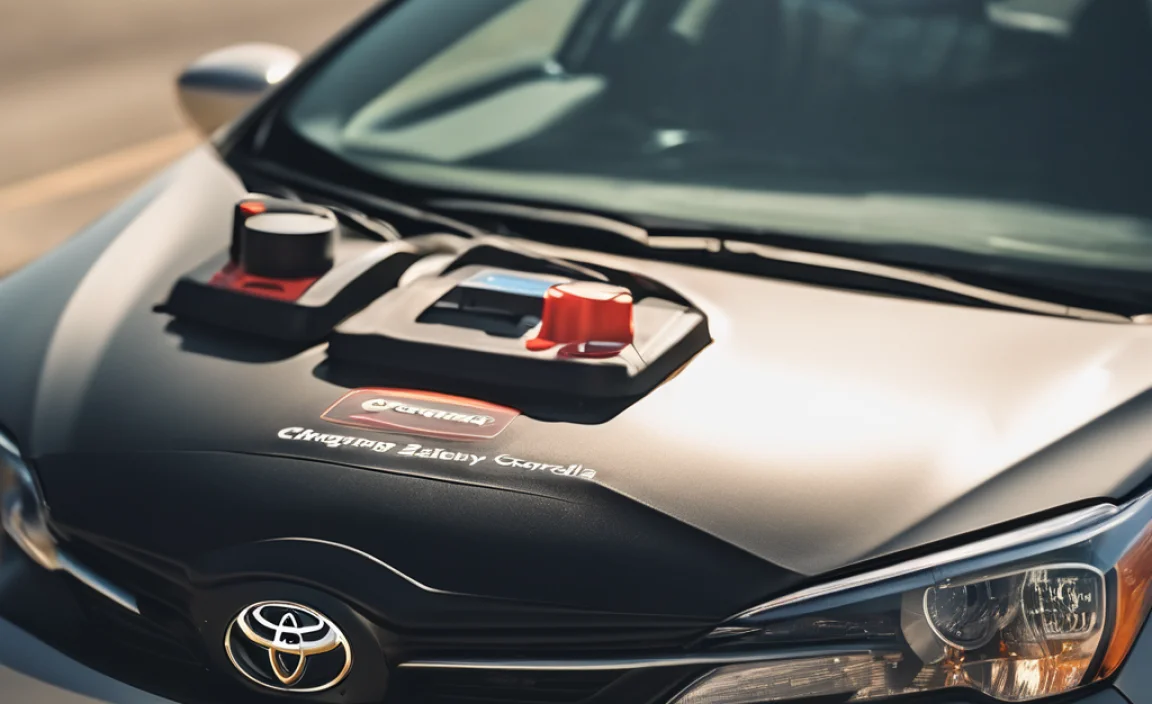2 Boat Battery Wiring: Effortless Diagram
Understanding how to correctly wire two boat batteries is fundamental for any boater who wants to ensure reliable power for their vessel’s systems. Whether you’re powering navigation lights, a fish finder, bilge pumps, or even a small galley, a robust and well-executed battery setup is crucial. Thankfully, creating an effective wiring diagram for 2 boat batteries doesn’t have to be an overly complex undertaking. With a clear understanding of the basic principles and the available options, you can confidently set up your dual-battery system for optimal performance and longevity.
Why Two Boat Batteries? The Advantages of a Dual-Battery System
Before diving into the intricacies of wiring, it’s important to appreciate the benefits a dual-battery system offers. The primary reason for going to two batteries is to create dedicated power sources. This typically involves one battery for starting the engine(s) and another for the “house” loads – everything else on the boat. This separation prevents your house electronics from draining the starting battery to the point where you can’t crank the engine, a common and frustrating problem with single-battery systems.
A dedicated starting battery is designed for high-amperage bursts, delivering the power needed to overcome engine compression and ignite the fuel. House batteries, on the other hand, are built for deep cycling, meaning they can be discharged and recharged repeatedly without significant damage. This is essential for powering accessories that run for extended periods, like lights, refrigerators, and stereo systems. By separating these functions, you extend the lifespan of both battery types and ensure you always have the cranking power when you need it.
Understanding the Core Concepts of 2 Boat Battery Wiring
The fundamental principle behind wiring two boat batteries is to establish a connection that allows charging and distribution of power. The most common configurations involve either connecting the batteries in parallel or in series, each with distinct outcomes for voltage and capacity.
More often than not for typical recreational boating, you’ll be connecting your batteries in parallel. This means connecting the positive (+) terminal of one battery to the positive (+) terminal of the other, and the negative (-) terminal of the first battery to the negative (-) terminal of the second. The result of a parallel connection is that the voltage remains the same (e.g., two 12-volt batteries in parallel still provide 12 volts), but the amp-hour (Ah) capacity is doubled. This increased capacity is ideal for the house battery bank, providing more sustained power for accessories.
A series connection, while less common for dual-battery setups on most boats, involves connecting the positive (+) terminal of one battery to the negative (-) terminal of the other. The remaining positive and negative terminals are then used for the system. A series connection doubles the voltage while keeping the Ah capacity the same (e.g., two 12-volt batteries in series create a 24-volt system). This is typically reserved for larger vessels with 24-volt or 36-volt trolling motors or other specialized high-voltage equipment. For the purpose of a standard starting and house battery setup, parallel wiring is the way to go.
The Effortless Diagram: A Common Dual-Battery Setup
Let’s focus on the most common and straightforward wiring diagram for 2 boat batteries: a dedicated starting battery and a house battery, both operating at 12 volts and wired in parallel for increased capacity on the house side.
Battery Isolation/Combiner: The key component in this setup is a battery isolator or a battery combiner (often an automatic charging relay, or ACR). This device acts as a smart switch, allowing the engine’s alternator to charge both batteries when the engine is running, but preventing the house loads from discharging the starting battery when the engine is off. When the engine starts and its voltage rises above a certain threshold, the isolator/combiner automatically connects the two batteries, allowing the alternator to charge them both. When the engine is shut off and the voltage drops, it disconnects them, keeping the starting battery isolated. This is the simplest and most effective way to manage two batteries.
Starting Battery Connections:
The positive (+) terminal of the starting battery connects directly to the engine’s starter solenoid and the main engine harness.
It also connects to one side of your battery isolator/combiner.
House Battery Connections:
The positive (+) terminal of the house battery connects to the other side of your battery isolator/combiner.
The negative (-) terminal of the house battery connects to a common ground bus bar or directly to the boat’s main negative ground. This is where all your house accessories will draw power from.
Main Power Distribution:
A main positive distribution block should be connected to the positive terminal of the house battery (after the isolator/combiner). All your house accessory positive wires will connect to this bus bar.
A main negative distribution block (ground bus bar) should be connected to the negative terminal of the house battery. All your house accessory negative wires will connect here.
Key Considerations for Your Wiring Diagram for 2 Boat Batteries:
Wire Gauge: Proper wire gauge is critical. Using wires that are too thin can lead to voltage drop, overheating, and potential fire hazards. Consult a marine wiring gauge chart based on the amperage of your circuits and the length of the wires.
Terminals and Connectors: Use high-quality, marine-grade ring terminals and connectors. Ensure all connections are clean, tight, and properly crimped or soldered.
Fusing and Circuit Breakers: Every circuit should be protected by an appropriately sized fuse or circuit breaker. This is a non-negotiable safety feature. The main positive feed from each battery, as well as individual accessory circuits, should have protection.
Battery Switches: While an isolator/combiner handles automatic charging separation, a manual battery switch (or switches) offers an additional layer of control and safety. A common setup involves a selector switch that allows you to choose “1,” “2,” “Both,” or “Off.” If you have a single isolator/combiner, you might have a separate master switch for the house bank.
Battery Type: Ensure you’re using marine-grade batteries, ideally a deep-cycle battery for the house bank and a starting battery for the engine. Some boaters opt for “dual-purpose” batteries, which offer a compromise, but dedicated batteries generally provide superior performance.
Advanced Configurations and Upgrades
For those with more demanding power needs, several advanced configurations can improve functionality:
Multiple House Batteries: You can wire multiple house batteries in parallel to further increase your Ah capacity, providing even longer run times for your accessories. The principles of connection remain the same as for a single house battery.
High-Amp Alternator: A higher-output alternator can more effectively charge larger battery banks, especially on boats with significant power demands.
* Solar Charging: Integrating solar panels with a charge controller can provide a sustainable way to keep your house batteries topped up, especially during periods of disuse or extended anchoring.
Safety First: Always Prioritize Safety
When working with electrical systems, especially on a boat where water is ever-present, safety must be your absolute top priority. Always disconnect the batteries before beginning any wiring work. Double-check all connections for polarity. Use appropriate safety gear, including eye protection. If you are unsure about any aspect of the wiring process, it is always best to consult a qualified marine electrician.
By understanding the principles of parallel wiring, utilizing a battery isolator or combiner, and adhering to best practices for wiring and safety, you can create a robust and reliable two-boat battery system that will serve your needs for years to come. The effort invested in a well-planned wiring diagram for 2 boat batteries will pay dividends in enhanced performance and peace of mind on the water.


